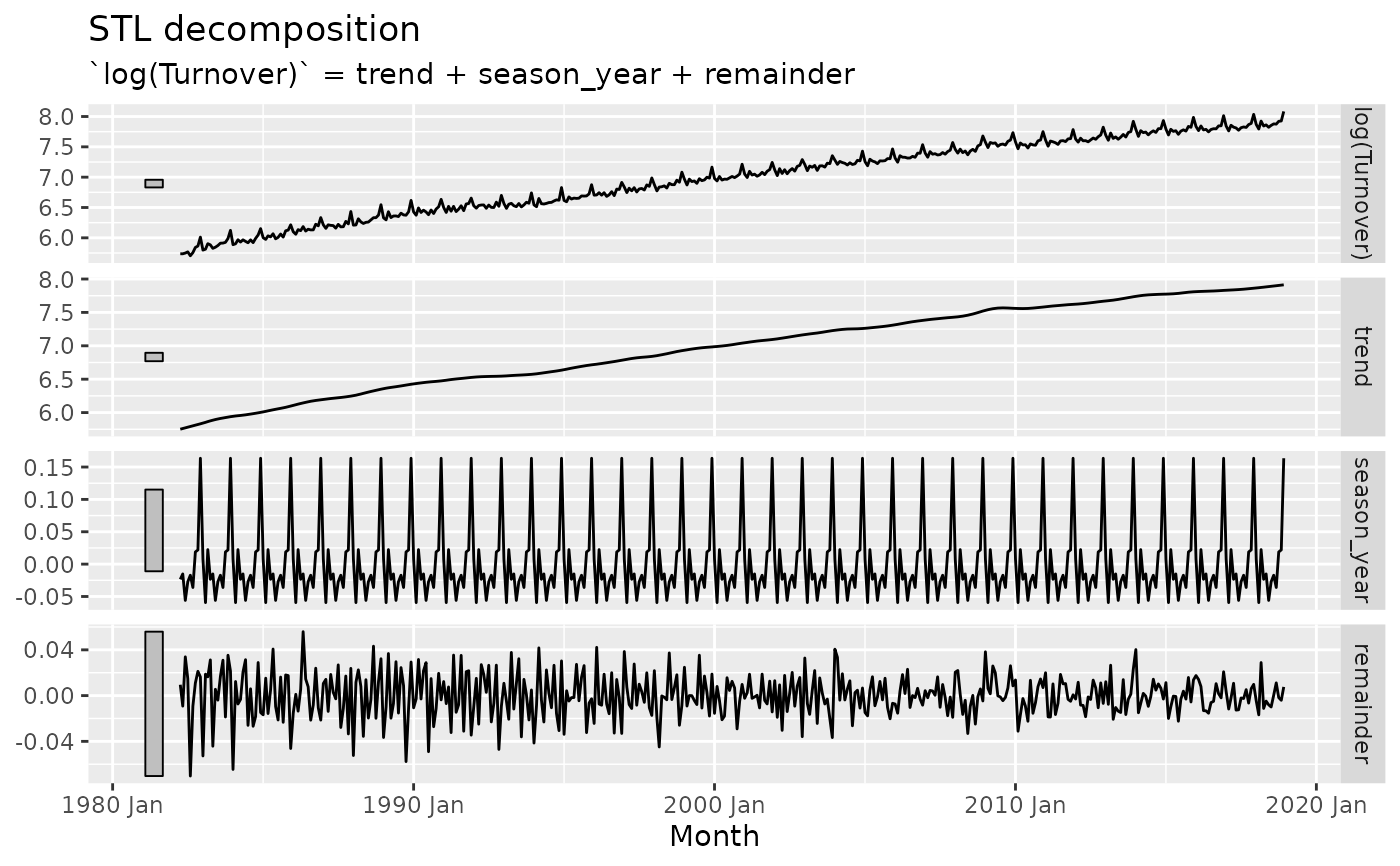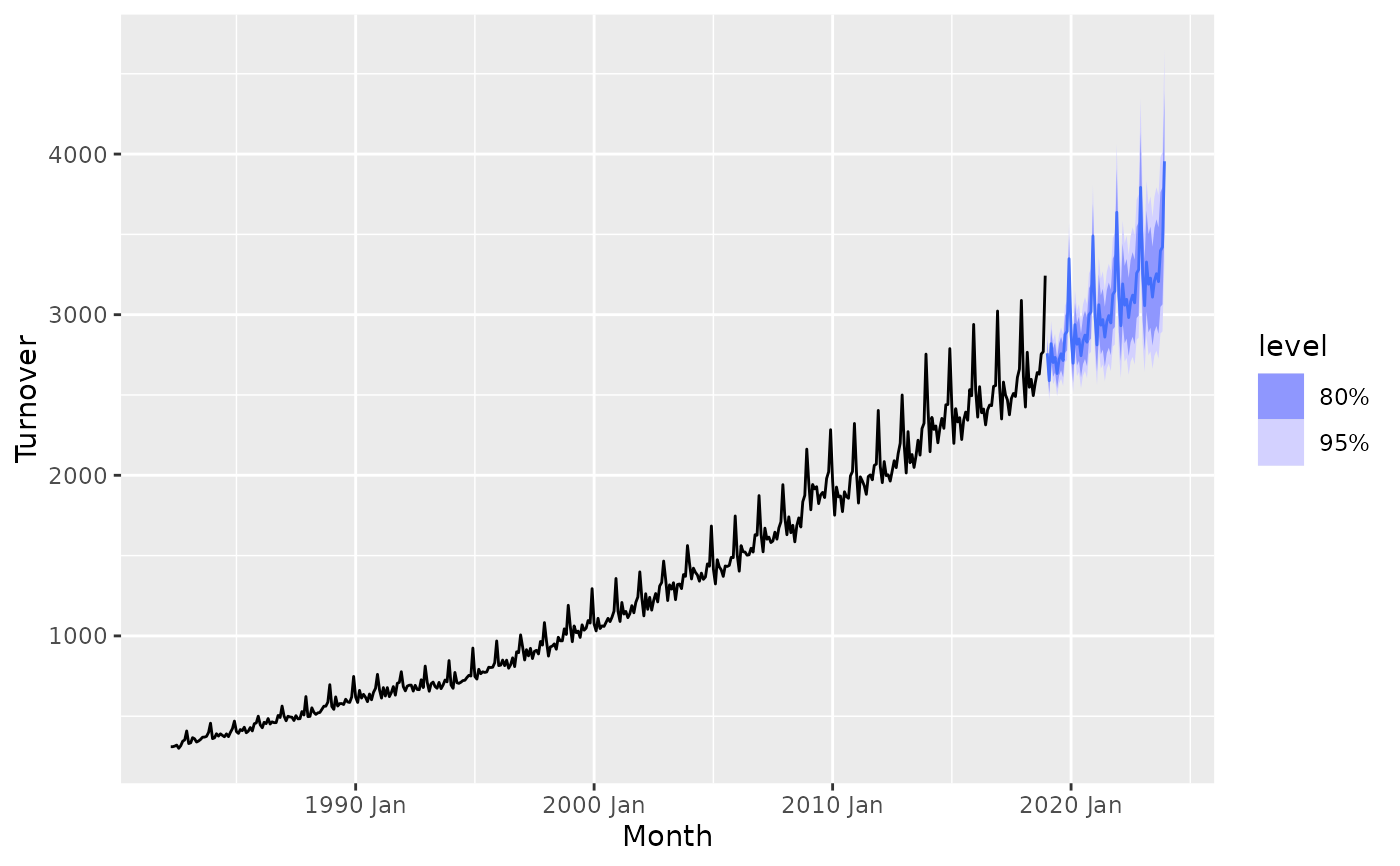This function allows you to specify a decomposition combination model using
any additive decomposition. It works by first decomposing the data using the
decomposition method provided to dcmp_fn with the given formula. Secondary
models are used to fit each of the components from the resulting
decomposition. These models are specified after the decomposition formula.
All non-seasonal decomposition components must be specified, and any
unspecified seasonal components will be forecasted using seasonal naive.
These component models will be combined according to the decomposition
method, giving a combination model for the response of the decomposition.
decomposition_model(dcmp, ...)Arguments
- dcmp
A model definition which supports extracting decomposed
components().- ...
Model definitions used to model the components
Examples
library(fable)
library(feasts)
library(tsibble)
library(dplyr)
vic_food <- tsibbledata::aus_retail %>%
filter(State == "Victoria", Industry == "Food retailing")
# Identify an appropriate decomposition
vic_food %>%
model(STL(log(Turnover) ~ season(window = Inf))) %>%
components() %>%
autoplot()
 # Use an ETS model to seasonally adjusted data, and SNAIVE to season_year
# Any model can be used, and seasonal components will default to use SNAIVE.
my_dcmp_spec <- decomposition_model(
STL(log(Turnover) ~ season(window = Inf)),
ETS(season_adjust ~ season("N")), SNAIVE(season_year)
)
vic_food %>%
model(my_dcmp_spec) %>%
forecast(h="5 years") %>%
autoplot(vic_food)
# Use an ETS model to seasonally adjusted data, and SNAIVE to season_year
# Any model can be used, and seasonal components will default to use SNAIVE.
my_dcmp_spec <- decomposition_model(
STL(log(Turnover) ~ season(window = Inf)),
ETS(season_adjust ~ season("N")), SNAIVE(season_year)
)
vic_food %>%
model(my_dcmp_spec) %>%
forecast(h="5 years") %>%
autoplot(vic_food)
